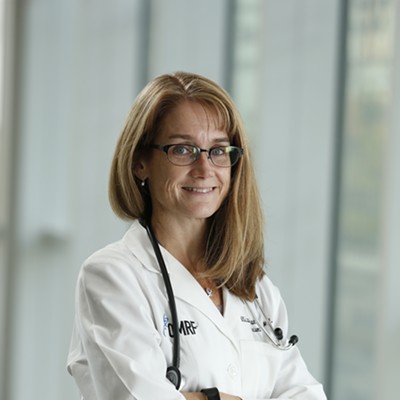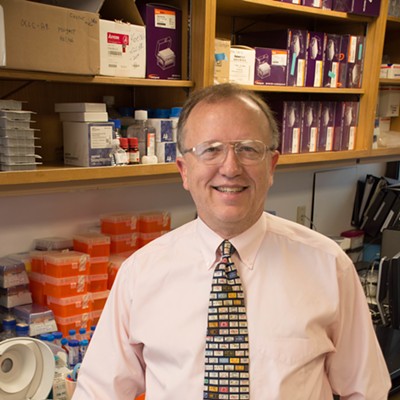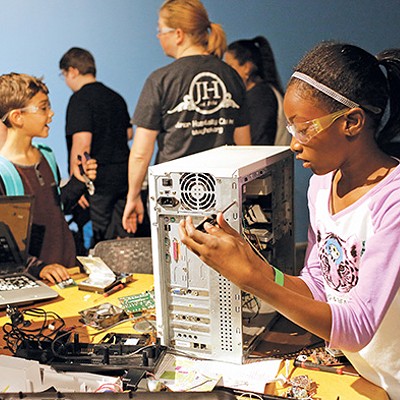At work, the Oklahoma Medical Research Foundation scientist uses a microscopic worm to learn more about autism.
At home, he and his wife, Kathy, have spent the last 17 years raising two sons with autism spectrum disorders, proving nothing comes quickly in science or in autism.
“There’s the possibility of a good, positive outcome. But the reality is: It doesn’t come easily. There are no shortcuts,” Rand said.
At the time Jeremy and Marty were diagnosed, Rand did not foresee that his research would help him learn more about the disorder that was so much a part of his everyday life. Later, when other scientists discovered that defects in proteins between synapses, called neuroligins, are associated with autism, Rand knew he could use the worms he had worked with for years to study those proteins. The worm, with its 302 nerve cells, has one neuroligin, making it a perfect study case.
Since 2003, Rand has studied subtle behaviors associated with autism, like sensory issues, and found that worms with mutated neuroligins respond to temperature, chemicals and touch in similar ways as some people with autism.
“Autism is fascinating because of the kinds of things it can tell you about how brains work,” Rand said. “Before you can learn where and how to intervene, you have to learn the process.”
Meanwhile, Jeremy, who has Asperger’s syndrome, and Marty, who has an autism spectrum disorder, were growing up.
While there wasn’t a lot of information about autism, the couple learned as much as they could. Kathy, who is also a scientist, researched ways to improve her children’s lives. She finally settled on applied behavior analysis, which involves breaking tasks into small parts and providing rewards.
For example, Marty received one Skittle for each reading task he completed.
“It was my least favorite part of the day, but I learned to read,” said Marty.
The parents’ work helped the boys adapt, become part of robotics teams and excel. Jeremy, now 22, is at the University of Oklahoma majoring in computer science. Seventeen-year-old Marty is a junior at Norman North High School with plans to follow his brother to OU.
“They’ve both found things they love to do and are good at,” Kathy said. “They’re going to make it.”
Rand works daily to understand more about autism spectrum disorders, but his family doesn’t expect a cure — or even want one. Instead, Kathy said she would like her husband’s research to lead to ways to improve the quality of life for those with autism and reduce symptoms.
Jeremy said he and his brother can be successful and don’t need to change the way they think.
“The people who changed the world for the better are people who thought differently,” Jeremy said.
The successes of the Rands’ sons often give hope to other parents who are overwhelmed and want to know why Rand’s research can’t find solutions faster. Rand lets them know success and hope come in small doses, but they’re worth seeking.
“Suddenly they realize that door they thought had been slammed shut is actually open. It’s tricky going, but it can be done,” Rand said. “I tell them, ‘I’m just as impatient as you are. As a scientist, I can assure you we are pedaling as fast as we can.’”
Editor’s note: April is Autism Awareness Month.











